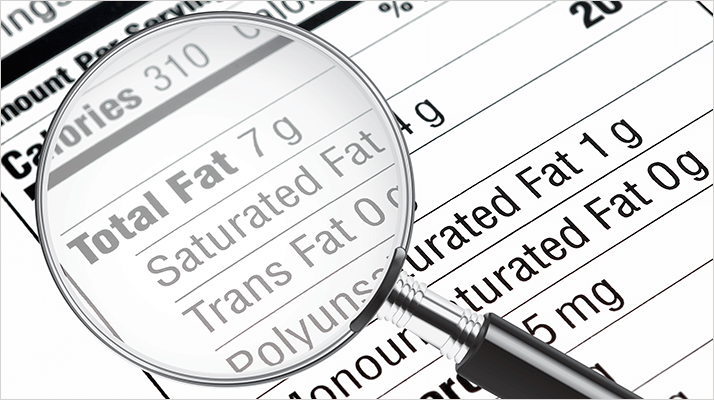Trans Fat Labeling
Trans fats (trans unsaturated fatty acids) are fatty acids that contain at least one double bond in the trans orientation. This orientation causes carbon atoms to align in a straight configuration, similar to saturated fatty acids. Most naturally occurring unsaturated fatty acids have double bonds in the cis orientation, which is a bent configuration.


Trans fats do not occur naturally in plant-based oils and fats. However, they can be produced commercially through a hydrogenation process, which is used to prevent foods from spoiling, and to produce specific structure effects (1). Examples of the structures of saturated, trans unsaturated, and cis unsaturated fatty acids are shown in Figure 1.
 Figure 1. Fatty Acid Structures
Figure 1. Fatty Acid StructuresConcerns have been raised for several decades that the consumption of trans fats may have contributed to an epidemic of coronary heart disease (1). In response, many government agencies instituted requirements that trans fat content must be listed on the nutritional labels of foods and some dietary supplements. Some regulations state if a food contains less than 0.5 g of trans fat per serving, then “0 g” is allowed to be listed on the label (2). If partially hydrogenated fats/oils are used in making the product, small amounts of trans fat will still be present (below 0.5 g even though 0 g is stated on the label).
Extraction and Analysis Methodologies
There are many references available for the preparation of samples for trans fat analysis. In 2007, the American Oil Chemists Society (AOCS®) published method Ce 1k-09 for the preparation of a variety of matrices for the analysis of lipids, including trans fats. This method describes the use of an acid digestion and alkali hydrolysis to release the fats and oils from the sample matrix, followed by methylation using boron trifluoridemethanol (BF3-methanol) (3). The fats are then analyzed by GC as their corresponding fatty acid methyl esters (FAMEs). The GC analysis method is chosen based on the sample matrix. In the case of vegetable oils and fats, AOCS Method Ce 1h-05 can be used. This method outlines the use of a 100 m highly polar cyanopropyl silicone capillary column for the single analysis of trans isomers, saturated, cis/trans monounsaturated, and cis/ trans polyunsaturated fatty acids (4). The length and high polarity of the column are necessary to facilitate resolution of the cis and trans monounsaturates in the oleic (C18:1) region.





